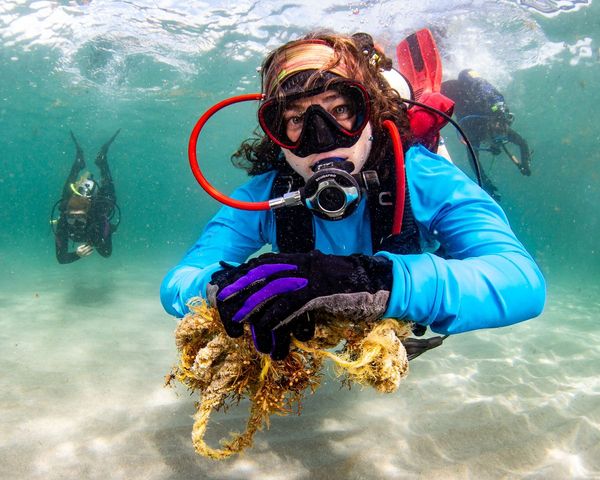No products in the cart
Dive Deeper Blog
Make it a Plastic-Free July
One of my favorite quotes is from Maya Angelou:
“Do the best you can until you know better. Then when you know better, do better.”
Mary Angelou
And making that announcement now is the perfect tie-in with Plastic-Free July, an international challenge with more than 100 million participants looking at how they can cut back on the plastic pollution that impacts our neighborhoods, waterways and beautiful blue oceans.
I love events like this that reach past our “choir” of supporters, because we all need to look at the waste we mindlessly create. Ever since I started Stream2Sea, packaging has been a top priority. I’ve spent countless hours searching for alternatives to virgin plastic made from petroleum. We’ve been using either plastic made from sugarcane resin or recycled milk jugs, but using ocean-bound plastic is taking that commitment a step further.
The amount of plastics that pour into our oceans every day is truly horrifying. More than 14 million tons of plastic enter the oceans every year, joining the estimated 5.25 TRILLION pieces of trash already polluting nearly every waterway in the world. If we don’t change how we use and dispose of plastic, scientists estimate that there will be more plastic in the ocean than fish by 2050.
We’re doing everything we can to prevent that. Last fall, we joined forces with 4Ocean to create a sunscreen balm packaged in an aluminum tin. Those sales will help them remove an estimated 1.5 million tons of plastic from the ocean every year.
However, it’s more effective to capture plastics before they enter the ocean, particularly when we can help “close the loop” on the significant costs involved in turning ocean-pound plastic into a viable business that helps to address this horrible problem.
Unlike most recycling initiatives, only a small portion of ocean-bound plastic is considered commercially recyclable. It’s collected within about 30 miles of an ocean or a major river in locations where waste management is not efficient. To a large degree, that means impoverished communities in southeast Asia, South America and sub-Saharan Africa.
This isn’t plastic bound for landfills—it’s collected as litter from communities where there are no landfills, and it’s nearly impossible to “properly dispose” of plastic waste. Without an infrastructure in place to collect it, whatever is disposed of on land simply washes away into the nearest creek or river and ends up in the ocean. Collecting this plastic waste before it enters the water not only prevents more pollution, the process of gathering it provides sustainable jobs for hundreds of people in places where jobs are desperately needed.
New technology can transform that waste plastic into high-quality tubes and bottles that are virtually undetectable from virgin plastic in terms of quality and longevity. Even materials like used ropes can be collected and recycled – like this effort in the Florida Keys that strikes close to home (and actually made us a little teary).
In a lot of ways, changing our packaging is like creating Reef-Safer™ sunscreens. Avoiding toxic petrochemical sunscreens doesn’t change the more significant problems of warming ocean waters and overfishing, but it’s up to every single one of us to make a difference. When we know better, we do better and helping to close the loop on ocean-bound plastic is a giant step forward for our oceans.
